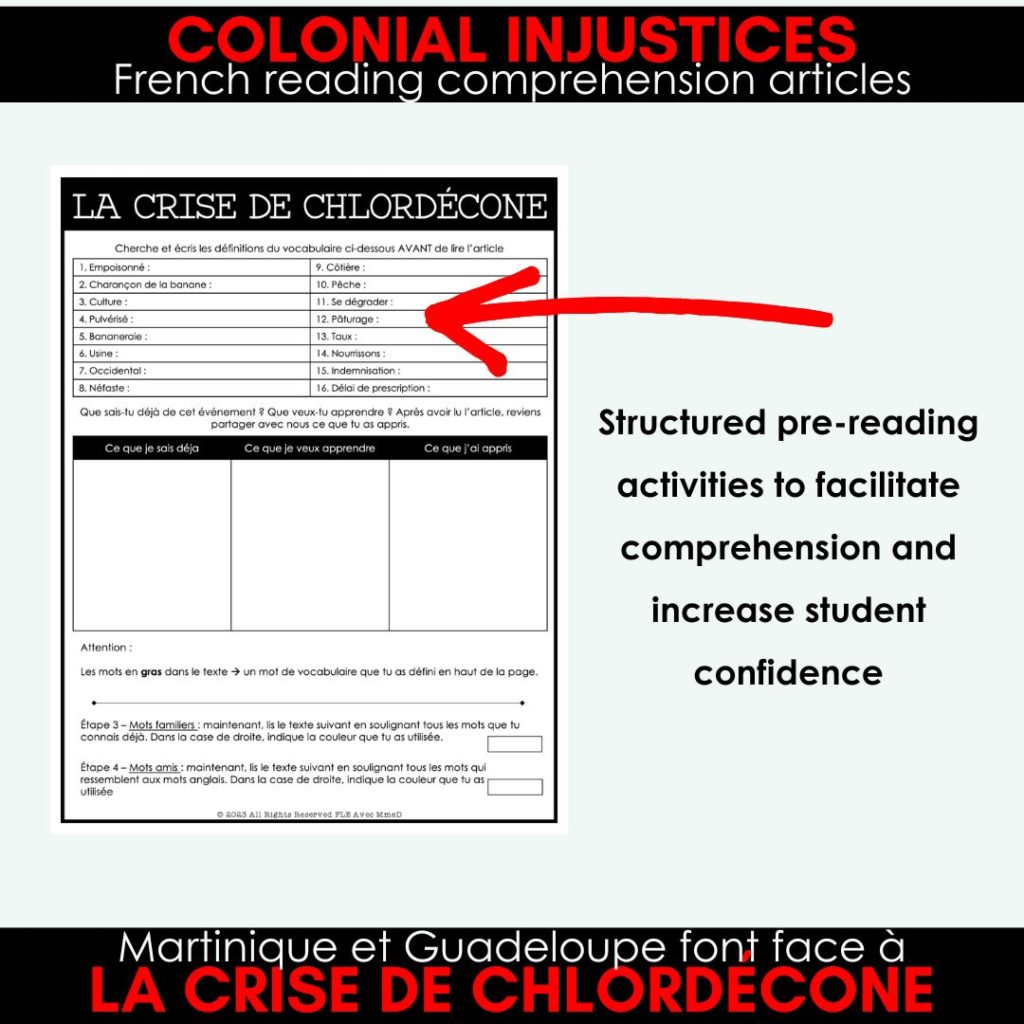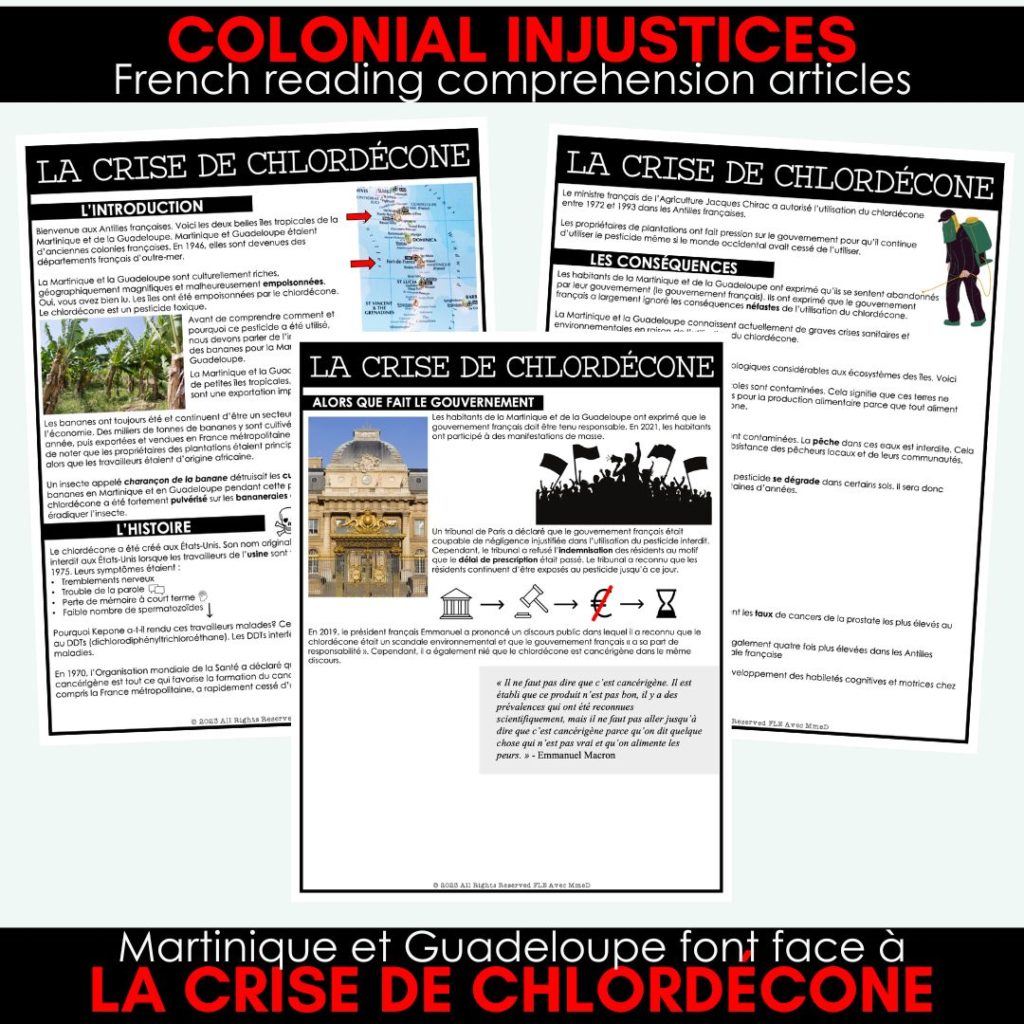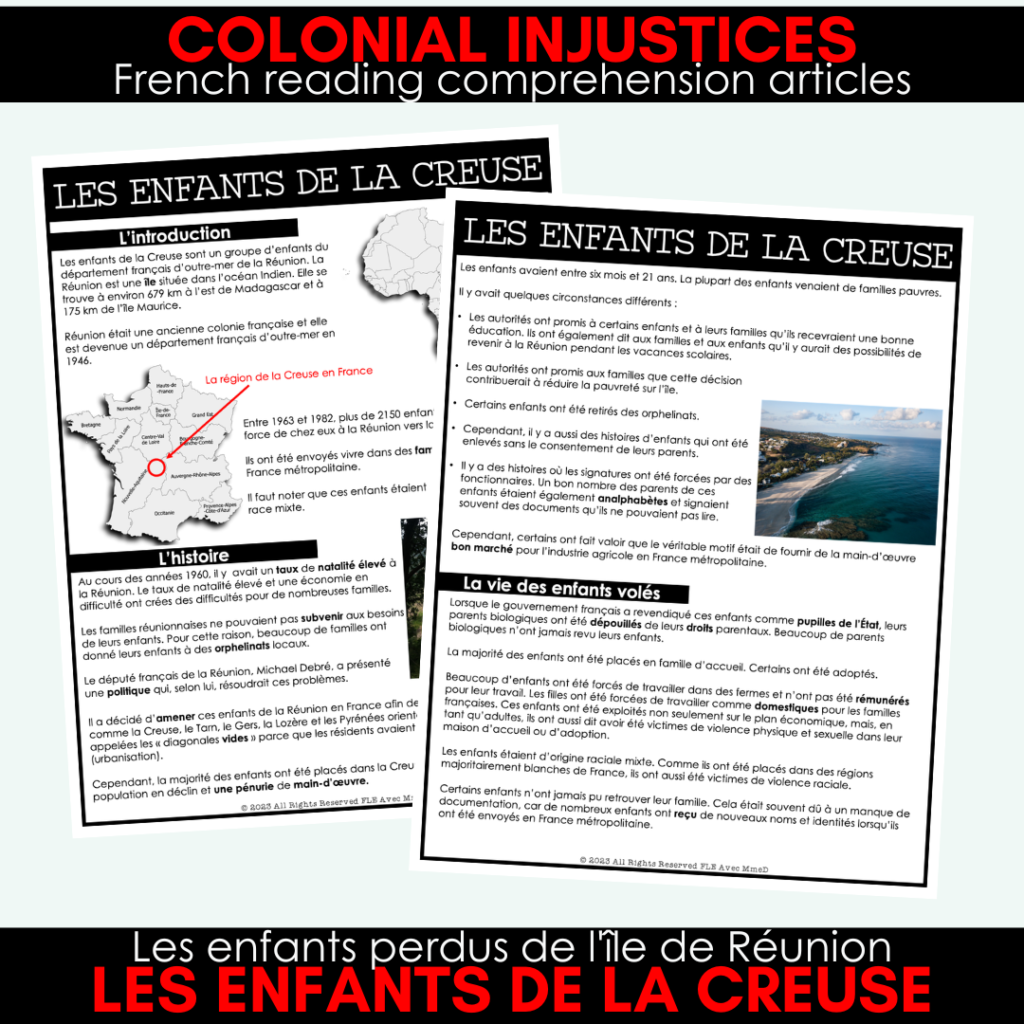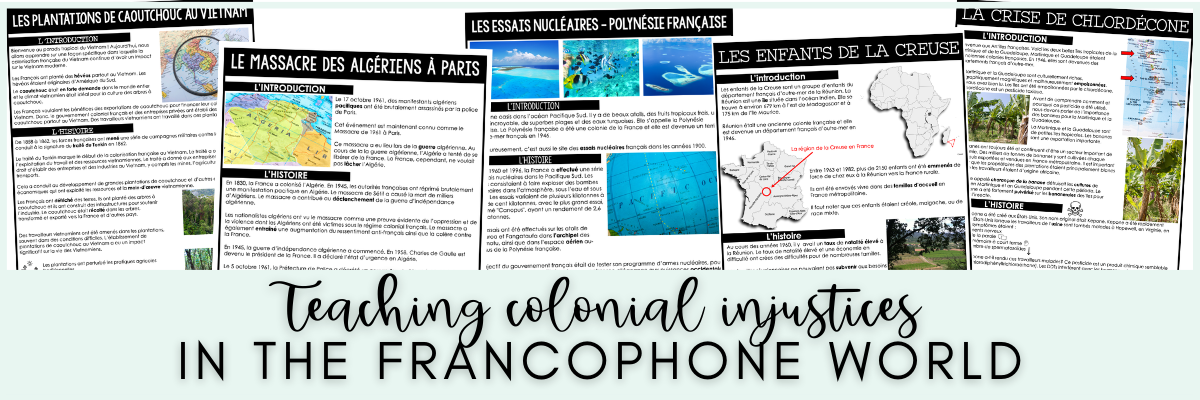
As French teachers, it’s important to not only teach students about the French language and amazing cultural aspects of the francophone world but also its complex and often painful history. Colonial injustices continue to have a lasting impact on many francophone countries and peoples. It is essential that we educate our students about this history. By exploring the legacies of colonialism and the history of resistance, we can help students develop a deeper understanding of how truly complex “la francophonie” is.
In this blog post, I’m sharing French reading comprehension articles written for Core French or French Immersion articles. Each article delves into one such colonial injustice in the francophone world.
Disclaimer** – I sometimes hear from French teachers that French class isn’t “socials class”. Dear French teacher – the French language cannot be separated from geography, culture, art, and history. A language, especially a colonial language such as French, does not exist in a vacuum. Teaching French in all of it’s complexities, including colonial injustices in the francophone world, is doing the language and the diverse peoples justice.
A quick disclaimer before we begin
Many of the articles in this bundle touch on very sensitive subject matter. Please ensure you know your students, their backgrounds, and their needs before reading some of these with your students.
Before we begin, why is the structure of the French reading comprehension articles ideal for learners?
All of the articles in this series follow a very specific structure. I have designed these strategies to build confidence among my Core French learners in the knowledge that they already have. You can read about these French reading comprehension strategies in this blog post.
Each article comes with :
- pre-reading activities
- 2-page article
- reading comprehension questions (English & French options)
- One extension activity per article
- Answer keys


Nuclear testing in French Polynesia

What was it? France conducted a series of nuclear tests in French Polynesia between 1966 and 1996. The testing took place primarily on the atolls of Mururoa and Fangataufa in the South Pacific.
How does it continue to impact people today? The nuclear tests had a major environmental impact on the region. They have also exposed Polynesians to radiation. Unfortunately, many Polynesians now suffer from radiation-related health issues and diseases.
Why should students learn about it? French Polynesians continue to deal with the health and environmental ramifications of nuclear testing. This is not an issue that is over. We must not only teach students about the richness of Polynesian culture, but also the devastating consequences of nuclear testing in the region.
Chlordecone crisis in Martinique and Guadeloupe
This next topic is one I have been hearing about in the media and also on social media. This article aims to educate French students on a major public health and the environmental crisis unfolding in Martinique and Guadeloupe.
What was it? The Chlordecone crisis is a public health crisis currently occurring in Martinique and Guadeloupe. Chlordecone was a pesticide sprayed on banana crops from the 1970s to the 1990s. France authorized the use of chlordecone in Martinique and Guadeloupe despite the substance being banned in the West.
How does it continue to impact people today? Chlordecone is a persistent organic pollutant that remains in the soil and water, and continues to contaminate crops, seafood, and drinking water. Unfortunately, it takes 700 years to break down in the environment. Exposure to Chlordecone has been linked to serious health problems, including cancer, infertility, and developmental delays in infants.
Why should students learn about it? French students need to learn about the Chlordecone crisis because it is a very current environmental and public health crisis occurring in the French Overseas Departments of Martinique and Guadeloupe. The habitants of the islands are currently fighting for justice as we speak.

Les enfants de la Creuse – the stolen children from Réunion

What was it? The Enfants de la Creuse refers to a group of children from the French overseas department of Réunion who were forcibly removed from their families. They were sent to be raised in mainland France in the 1960s and 1970s.
How does it continue to impact people today? The Enfants de la Creuse experienced severe trauma from the forced separation from their families and the abuse they suffered with their new families.
Why should students learn about it? Students should learn about the Enfants de la Creuse because it is an important part of French colonial history. Unfortunately, this event is also little known and studied in the francophone world.
The Paris massacre of 1961
What was it? The 1961 Paris Massacre was a violent attack by French police against Algerian protesters who were demonstrating against French colonial rule and the Algerian War. It occurred on October 17, 1961.
How does it continue to impact people today? The impact of the 1961 Paris Massacre is still felt today as it represents a dark chapter in French history and highlights the ongoing legacies of colonialism, systemic racism, and police violence. Many families of the victims are still seeking justice and recognition for the violence committed against them.
Why should students learn about it? Students should learn about the 1961 Paris Massacre because it is an important part of French history that is often overlooked or forgotten. By understanding this event, students can also reflect on contemporary issues related to racism, police violence, and human rights abuses.

The exploitation of Vietnamese people in rubber plantations

What was it? The Vietnamese rubber plantations were established by the French during their colonial rule in Vietnam. These plantations were used to exploit Vietnamese labor and natural resources to meet the growing demand for rubber in Europe and North America.
How does it continue to impact people today? The legacy of the Vietnamese rubber plantations continues to impact people today, particularly in terms of environmental degradation, economic exploitation, and social inequality. Many communities in Vietnam and other rubber-producing countries continue to face the harmful effects of the rubber industry, including land grabs, pollution, and poor working conditions.
Why should students learn about it? Students should learn about the Vietnamese rubber plantations during colonial rule because it represents an important example of how colonial powers used natural resources and labor from colonized countries to fuel their own economic growth. Understanding this history can help students reflect on contemporary issues related to global trade, environmental justice, and labor rights.


